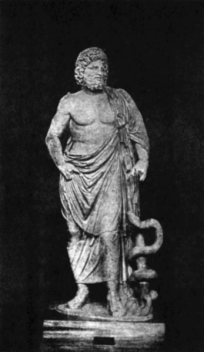I recently received a thank-you note from a patient. While I may spend hours taking care of a patient, most barely remember me. I meet patients in the preoperative area for a few minutes while they are distracted by the litany of paperwork and a parade of well-intentioned personnel from the hospital. Shortly thereafter, a magical cocktail of drugs erases most of the rest of our interaction.

This patient was different, he was a colleague that I had known for many years. The comment on the note was short and to the point: “Thank you for keeping me alive.”
As shocked as I was by the directness of the letter, it brought to mind several key anesthesia myths.
Myth #1 – Anesthesia is Safe
I don’t mean to say that anesthesia isn’t safe. On the contrary, anesthesia has never been safer. Overall mortality attributed to anesthesia is suggested to be on the order of 0.82 deaths per 100,000 inpatient surgical encounters (1. Guohua Li, M.D.). This is vastly improved from 1 death in 1000 anesthesia procedures in the 1940s and 1 death per 10,000 in the 1970s (ibid).
However, despite all the advances in medicine, receiving anesthesia is not a benign event. Beyond the risks associated with progression of existing diseases, unforeseen causes of mortality during anesthesia can occur. These could include medical events, drug reactions, dosage miscalculation and administration errors, procedural complications, equipment malfunction and much more. My friend knew this and did not take a good outcome for granted.
Myth #2 – Anesthesia is Routine
Nearly every day I give life-threatening drugs to patients. Sure, it’s routine for me to give anesthesia. Additionally, Americans undergo anesthesia 40 million times every year. But as commonplace as anesthesia has become in modern medicine, I would never use the term “Routine” to describe the events that occur during an anesthetic.
My friend and I have worked side-by-side in the operating room when a patient rapidly deteriorated. When the “Routine” surgery evaporated into a bleeding patient with life-threatening hypotension, I knew what to do thanks to my training. I treated the hypotension while we diagnosed and treated the cause of bleeding. After we finished the surgery we rolled the patient out to an anxiously waiting family. I had seen the look in my colleague’s eyes. It reflected his understanding that the patient would have died if I had not acted decisively.
My friend knew I would have acted decisively to save him if a similar situation occurred during his anesthetic. He also knew it was no accident that he was alive after his surgery – circumstances could have gone very differently.
Myth #3 – Anesthesia is just Propofol and an Airway
Without these key tools, modern anesthesia would not exist, but providing anesthesia is much more than picking the right dose of propofol and the right size airway. Simply put, one cannot give anesthesia in a cookbook fashion. While a chef may be able to bake a cake using the same steps every day, each anesthetic requires careful consideration of how surgical demands will interact with the patient’s particular physiology. This careful planning requires a strong background in anatomy, physiology, pharmacology – the pillars of medical training.
As a physician, I attended medical school for four years and earned a medical doctorate. With this medical foundation, I realized the full benefit of a rigorous four-year anesthesiology residency. This meant that I learned anesthesia as a professional and not as a technician.
The brief exchange between my friend and I before we went into the operating room was not laden with the usual “Risk vs. Benefit of Anesthesia” discussion. I reviewed his history, shared my plan and answered his questions. However, I felt no need to belabor the point of going through the what-ifs. He knew he would get propofol and I would place an airway, but he also knew that my training as an anesthesiologist would allow me to optimally manage his complex cardiopulmonary physiology and assess and treat his developing sepsis. By accepting my care for their surgery, my friend showed trust in my advanced medical training as an anesthesiologist.

A statue of Asclepius, the Greek god of healing (via Wikimedia Commons)
Beyond the myth
My friend did make it out “alive” and I was happy to visit him in my downtime as he convalesced in the hospital. As with every case that goes well, I am grateful for the good outcome and I am certainly happy that I was able to keep him alive. I am also glad that his surgery did not require me to respond to any curveballs.
Thanks to a good surgeon and a careful anesthetic plan, we were able to keep my friend alive and cure his condition. As an anesthesiologist, I am honored to possess the training and knowledge that let me provide the highest standard of care to my patients, even when circumstances aren’t routine.
- Epidemiology of Anesthesia-related Mortality in the United States, 1999–2005. http://anesthesiology.pubs.asahq.org/article.aspx?articleid=1926205
Please share your information below if you would like to read my future blog posts. Cheers! -BK

Reblogged this on patientsafe.
LikeLike